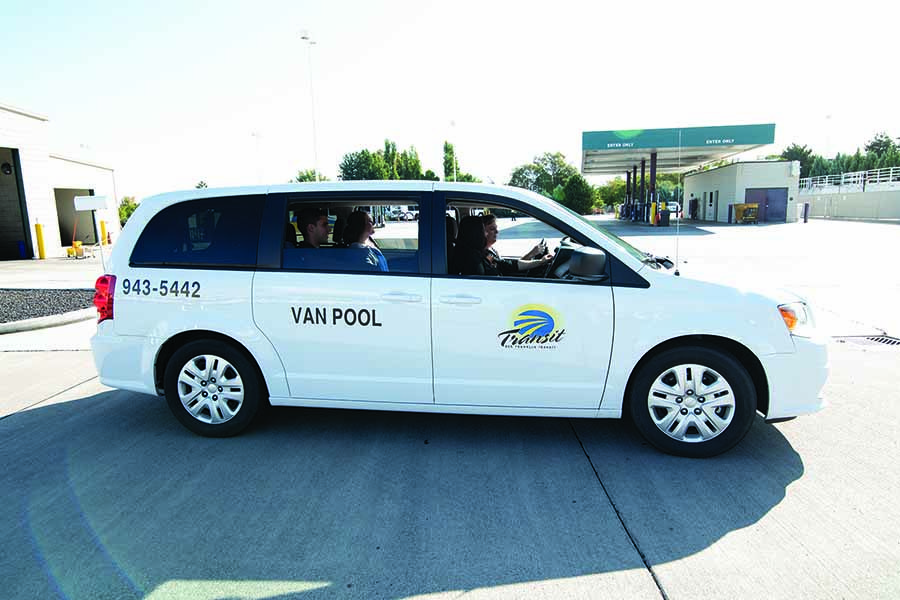
Home » Air pollution improves but region still has highest levels in state
Air pollution improves but region still has highest levels in state

May 13, 2021
The Tri-Cities’ ozone levels, the highest in the state, have landed the region on national and state watch lists for the past five years.
Since then, levels have improved but officials can’t pinpoint why. Concerns remain about them increasing again, which could prompt sanctions from the Environmental Protection Agency.
“We’ve definitely been keeping an eye on it. It is one of the biggest areas at risk in Washington state. We do continue to monitor it. I don’t think the reasons for why ozone is there are going to go away any time soon – or ever,” said Kari Johnson, air quality outreach specialist for the state Department of Ecology.
Ozone – also called smog and air pollution – is a chemical reaction that forms a toxic gas when certain conditions are right, and the Tri-Cities has them in spades, Johnson said.
She ticked off the list:
- It’s hot here. Ozone forms in temperatures over 88 degrees F.
- The Tri-Cities has the “perfect topography” for ozone, with air flows damming up against the Horse Heaven Hills, keeping bad air hanging around and allowing ozone to cook, she said.
- A high amount of emissions from gas-powered engines fuels the problem. “Our studies have shown that traffic congestion in the Tri-Cities is a big contributor,” she said.
High ozone levels also aren’t good for your health.
“It’s like a sunburn to the lungs. It can be felt. It’s an irritant to the eyes and the nose and the throat. Even healthy people, like outdoor workers and athletes, can be affected by it, and especially those who are sensitive, like asthmatics, the elderly, or children,” Johnson said.
BFT involvement
As the state continues to monitor the region’s ozone levels, Ben Franklin Transit is winding down a two-year $100,000 grant program aimed at reducing ozone levels.
Sure, the area’s ozone levels already have been decreasing since the 2016 study landed the Tri-Cities on the hazardous air list.
“It’s a little tricky because our monitors have not picked up on any exceedances in ozone for the past couple of years and that’s a good thing, but at the same time we don’t know why,” Johnson said.
“We’d like to see those levels stay low but to promote individual actions that do keep them low.”
That’s where BFT comes in.
The grant funds a full-time employee within the transit agency to work on ways to reduce traffic congestion and promote ridesharing. The state Legislature approved the money for the work, earmarking $406,000 for a dozen or so air quality projects around the state, including ozone reduction and dust mitigation in the Tri-Cities.
For the 2021-23 biennium, legislators approved $2 million to expand the work statewide. BFT has agreed to keep the grant-funded position to promote ridesharing after the current grant runs out on June 30.
In addition to this money, Ecology has been distributing $141 million in grants and other funding to reduce air pollution around the state to support zero emission transportation, including electric transit buses in the Tri-Cities, Johnson said. The money comes from the 2017-18 settlement with Volkswagen for violating state and federal Clean Air Acts.
The success of the recent two-year BFT grant is hard to measure since much of 2020 saw more people working from home than ever before.
“It really put a big hold on Ecology’s and BFT’s launch of the project,” Johnson said.
Matt Ragsdale joined BFT as a travel demand reduction specialist in July 2020 – the position funded by the grant.
“I basically walked into situation where ozone wasn’t being generated at all. Everyone was working remotely, and I was working remotely,” he said.
Johnson is a champion of this remote-working strategy to reduce emissions: “Telecommuting improves air quality – tell your boss.”
Ragsdale’s assignment includes outreach at community events, which have been largely canceled since he started, marketing research and tracking performance metrics to ensure the grant makes a difference, Johnson said.
Since the lockdowns did play a part in reducing factors contributing to ozone levels, Ragsdale said the goal now is to “sustain this behavior change.”
“We don’t want to see ozone with increased activity,” he said.
He’s trying to encourage commuters to consider other options to get to work now that more people are returning to the office. One incentive has been to offer Dutch Bros gift cards for those logging trips in BFT’s RidePro app, which manages the vanpools – groups who commute in a passenger van provided by BFT.
Ragsdale also surveyed vanpoolers about how their commuting patterns had changed and if they’d return to a vanpool in the post-pandemic world.
He said he was pleasantly surprised that more than half those surveyed said they would be interested in ridesharing again.
“People wanted to get back into vanpooling and riding the bus,” he said. “That bodes well for us going forward.”
BFT’s vanpool program took a hit when state-mandated lockdowns came in March 2020.
In February 2020, BFT recorded 51,370 vanpool segments. Ragsdale defines a segment as one leg of a trip. From home to work, for example.
A year later, the numbers plummeted to 11,719 segments.
Ragsdale continues to promote alternative ways to get to work and school.
“The need for concern for ozone in the Tri-Cities is still a real thing. ... I anticipate in the next year we will see a real spike in ozone levels,” he said, especially after those who have been vaccinated start traveling more during ozone season, which runs from May to September.
Scientists at Ecology have been studying the effects of the initial stay-at-home period on traffic emissions, primarily looking at near-road sites in Seattle and Tacoma since these were established specifically to measure traffic pollution.
Ecology found significant declines in carbon monoxide and oxides of nitrogen pollution during the late spring 2020. However, that effect had virtually disappeared by October. Nationally, studies have indicated that the pandemic will have reduced greenhouse gas emissions by roughly 10% in 2020.
Next review?
If the Tri-Cities’ air quality isn’t improved, stricter regulations to get into compliance likely will follow – rules that could negatively affect the economy, making it more difficult for businesses to secure permits to expand.
“It could create economic hardships for the area,” Johnson said.
Additional regulations also could be a deterrent for new businesses to open and could require expensive solutions to mitigate ozone problems.
The region has to meet a certain threshold for a certain number of years to be considered out of the woods. “The Tri-Cities has not met that yet. Granted, there have been a good couple of years and that has helped,” Johnson said.
The Environmental Protection Agency also looks favorably on community efforts to reduce ozone, so even if the Tri-Cities is above standards, “EPA could give us a pass if we’re working on efforts to reduce ozone,” she said.
The EPA’s next review of Tri-City ozone levels is set for fall 2022.
What can I do?
Ozone is not inevitable and can be prevented from forming, Johnson said.
“Individual actions go a long way in helping that. On those days when it’s just so hot, I like to say you get a pass to relax. You can put off running those errands that require your car,” she said.
Wait until it cools down to mow the yard. Walk, bike or let someone else drive, like BFT, to run your errand.
“The Tri-Cities is growing and traffic could increase so all of these actions, even little ones, add up in a big way for preventing ozone,” Johnson said.
To sign up for ozone air quality alerts, go to lar.wsu.edu/tricitiesozone.html.
Local News Environment
KEYWORDS may 2021




